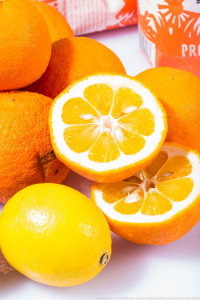 I saw them in Waitrose. 1 kilo boxes of Seville oranges and it got me thinking; how long is it since I made marmalade? Ages, that’s for sure. It’s a big topic this year, helped in some way no doubt by the Paddington movie (I have always been a fan and loved the film!).
I saw them in Waitrose. 1 kilo boxes of Seville oranges and it got me thinking; how long is it since I made marmalade? Ages, that’s for sure. It’s a big topic this year, helped in some way no doubt by the Paddington movie (I have always been a fan and loved the film!).
I used to make marmalade every year when I worked at Yalbury Cottage, never enough to last but it went down well on the breakfast table. I have made kumquat marmalade for sponge puddings, a stellar dish that Peter Gorton used to do at the Horn of Plenty and I’ve made the occasional batch of jam for dishes at Sienna. A preserves expert? Definitely not!
Now my Mum, that was a different matter. We had a farm shop in Cornwall back in the early 80’s and she cooked pretty much full time for the shop. Cakes, sponges, tray bakes, hot cross buns at Easter, Christmas cakes and biscuits as well as a large range of jams, marmalades and chutneys. I remember cupboards full of empty jars, bottles of Certo and sugar by the sack. We ran a lorry to Bristol market once a week for a time taking Cornish new potatoes, cauliflowers or swedes to the market and bringing a whole range of produce back to sell in the shop. A last tour around the market after the main foray would yield the less than perfect produce for jams and chutneys; there was never any telling what would be offloaded from the van into Mum’s kitchen.
My Aunt is a keen gardener and preserver too, so when Mum’s recipe books failed to give up a marmalade recipe, it was her I rang to chat to. As we talked on the phone about life in general, she pulled out various preserving books which are used as guides but whose recipes have been adapted over the years and are covered in her notes. I had done some reading anyway and had a rough recipe in mind. Three fruits marmalade is Liz’s usual recipe (it’s my cousins favourite), but oddly she had just made a batch of Seville marmalade so the information was all to hand.
I had a really fun day pottering around in the kitchen enveloped in the smell of citrus fruit. It can be a bit of a challenge setting up to do the cooking part and the photography but good results on both fronts made it well worth while. I even avoided getting the camera and laptop too covered in marmalade!
SEVILLE ORANGE MARMALADE
Makes around 6 large jars
- 1.1 kg Seville oranges, well washed
- 2 lemons, well washed
- 2kg preserving sugar
- 10g butter
Equipment needed
- Sharp knife
- Chopping board
- Juicer
- Large saucepan
- Muslin square
- Temperature probe or sugar thermometer
- Jug or preserve funnel
- Sterilised jars
Start by halving all the fruit and juicing it, retaining all the pips. Use a teaspoon to scrape the membranes out from the juiced fruit. Cut the skins in half again and slice off some of the white pith if it is really thick. Next slice the skins into strips, choosing whether you want a fine shred or a coarser one. The shreds will swell as they cook to an extent. I added the lemon skins to the mix, although many recipes call for just the juice and thereforeI would have to accept that maybe this means it isn’t a true Seville orange marmalade.
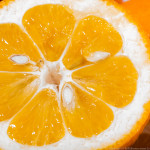

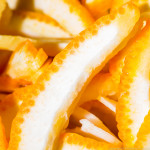
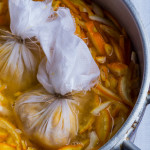
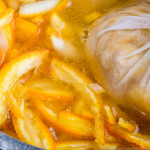
Add the sugar to the pan and stir constantly until it has dissolved, then increase the heat and boil the marmalade rapidly for 5 minutes before starting to check for a set. A thermometer should register 104-105℃ or pour a spoonful onto a chilled saucer, and when the edge of the pool of marmalade is pushed the skin should wrinkle.
Once a set is achieved, pour the marmalade into the sterilised jars and seal accordingly.
I used a mixture of Kilner jars, some with the disposable lid inserts and some of the wire caged ones. Both do the job well as would recycled jars, either with screw lids or wax discs and cellophane tops.
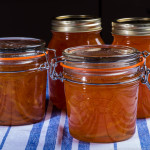
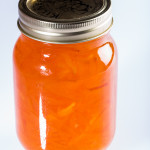

Dear Russell:
I saw now your wonderful post. Thanks so much for using our organic Ave Maria Seville Oranges from Waitrose. We grow them with love to send to the UK the best.
Thanks once again and all our best wishes for 2017.
José.
Ave Maria Farm
@farmavemaria
http://www.sevilleoranges.com